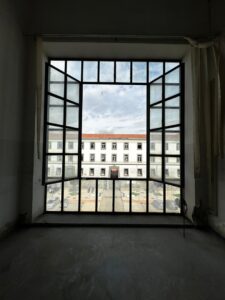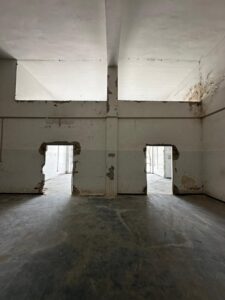
Valorization of the former fish market, Naples
We want to talk to you about a project that is taking its first steps in these days and which concerns the VALORIZATION OF THE FORMER FISH MARKET of Naples, specifically: restoration, regulatory and plant adaptation.
The building of the former Fish Market is located in the eastern port area of the City of Naples, in Piazza Duca degli Abruzzi: a complex area, which today appears as a margin between the compact centre, the port area and the eastern suburbs which it can represent, from a collective regeneration perspective, a potential to mend the relationship between the urban center and the port area. The project for the valorisation of the former Fish Market building is part of this perspective and, integrated with the creation of the adjacent Marinella Park, can constitute the first piece of a master plan for the park of culture and the sea, i.e. a complex and incremental regeneration process of the coastal/port area that is able to enhance and connect the different architectural, historical and landscape emergencies for a renewed collective and creative use of the former productive area of the city.
The Fish Market is due to the initiative of Luigi Cosenza, a recent graduate in Engineering from the Polytechnic of Naples, who offered a free project for a modern, equipped, economical and functional seat of the fish trade to replace the one characterized by a neo-eclecticism already in place by the municipality (FISH MARKET 1931) due to the closure in 1926 of the existing structures, which were inadequate and in unsustainable hygienic-sanitary conditions. Luigi Cosenza’s building will be the first example of industrial architecture in Naples.
The overall image exhibits an essentiality of sign consistent with the rigor with which Cosenza governs the conception of internal space: pure volumes, clear profiles, and white surfaces engraved by the precise gashes of the openings, with the total, intentional and “programmatic” cancellation of every ornament.
Once again we find ourselves faced with a building of inestimable importance in which architectural and engineering skills are compared with history, art, the importance of functions.






